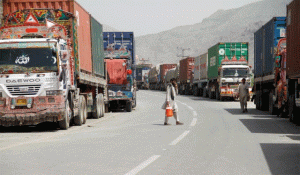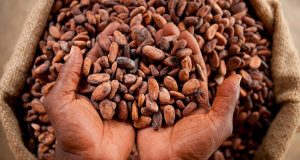In the month of September, there were significant price increments for some commodities nationwide.
The price of tomatoes, for instance, increased by 5.35 percent to close trading at GH¢348.17 per crate. This was followed by gari with a 3.78 percent increment to close at GH¢231.75 per 68kg.
Commodities that made losses included yam, which decreased by 8.9 percent in price, closing at GH¢742.83 per 100 tubers. Maize and groundnut recorded a 5.28 and 3.79 percent loss respectively closing at GH¢153.86 and GH¢544.43.
According to Esoko Ghana, most of the commodities grown down south of the country are still in the harvest season and hence would result in prices being relatively stable with occasional drops in October as compared to last month.
But a visit to some markets in Accra proves otherwise.
Citi Business News’ interaction with some traders at the Mallam Atta and Nima markets shows that prices of food commodities are still on the rise.
At the Mallam Atta market, general prices of food commodities have surged.
Most of the traders who spoke to Citi Business News attributed the rise in cost to the heavy rainfall in recent times, which ends up destroying most of the crops.
A tomato seller, Monica Adjei explained, “I have grouped them. They go for GH¢5, GH¢10 and GH¢15. But the GH¢15 bucket has been increased to GH¢20. So you can negotiate and sell it for GH¢18. The GH¢10 bucket has also been increased to GH¢12. Tomatoes are not supposed to be expensive in October. But the heavy rains destroy a lot of them so it causes the remaining few to be sold at higher costs.”
Christiana Appiah lamented, “For a while now, the prices have been okay. But since October started, the price of pepper and tomatoes have been increased. Now a bag of tomatoes which we used to buy at GH¢400 now goes for GH¢700. The heavy rains are spoiling the tomatoes. That’s why the cost keeps increasing. The red pepper is even worse. A bag of red pepper is now GH¢800. A bag of green pepper, which we used to buy at GH¢100, now goes for GH¢280. The prices will only reduce when the rainy season is over.”
Others also said the prices are a bit higher because of the harvesting seasons.
“The price has seen a marginal increase because they haven’t harvested new ones. When they come, the prices will drop. We used to sell the bucket of soyabean for GH¢8. Now it goes for GH¢10. Same applies to the rest of the grains. The prices change depending on their harvest season,” said Bernice Cosmos.
Christiana Dansoaa, who has sold yam for more than 25 years said things are different this year.
“When the yams are freshly harvested, their prices are reasonable but it goes up during the festive seasons. But things are different this year. At first, we could get a bag for GH¢200 but the prices have increased again.”
Meanwhile, at the Nima market, the prices of grains have seen a huge increase, with soyabean especially being scarce. When asked for reasons for the surge, Gafaru Iddrisu shared a totally different opinion from the other traders. According to him, there is always a huge rise in cost of grains in every election year.
“At first, we used to buy a bag of millet at GH¢200 but now millet is costing almost GH¢350. Because of the election year, the prices of things have gone up. We used to buy soyabeans for GH¢150, but now it’s over GH¢300. At first Togo beans was GH¢350. Now if you aren’t having about GH¢700, you can’t buy Togo beans.”
Source: Citibusinessnews.com







